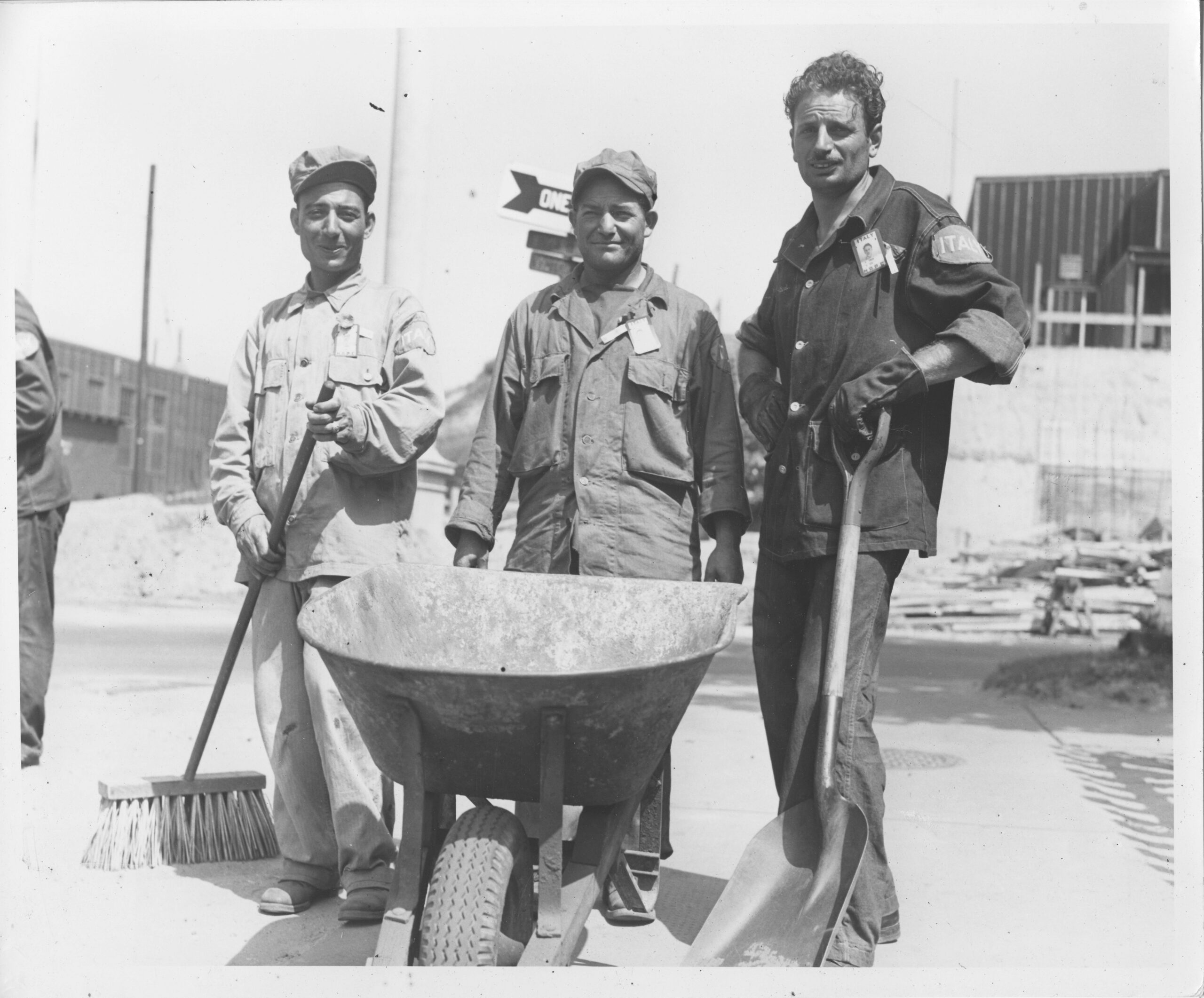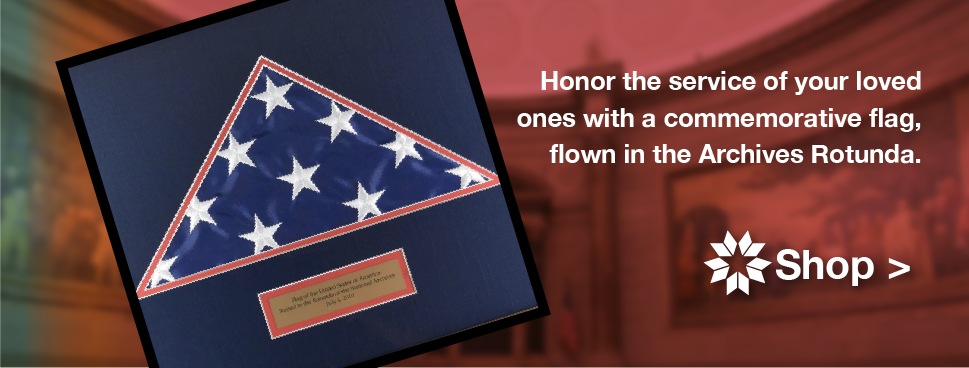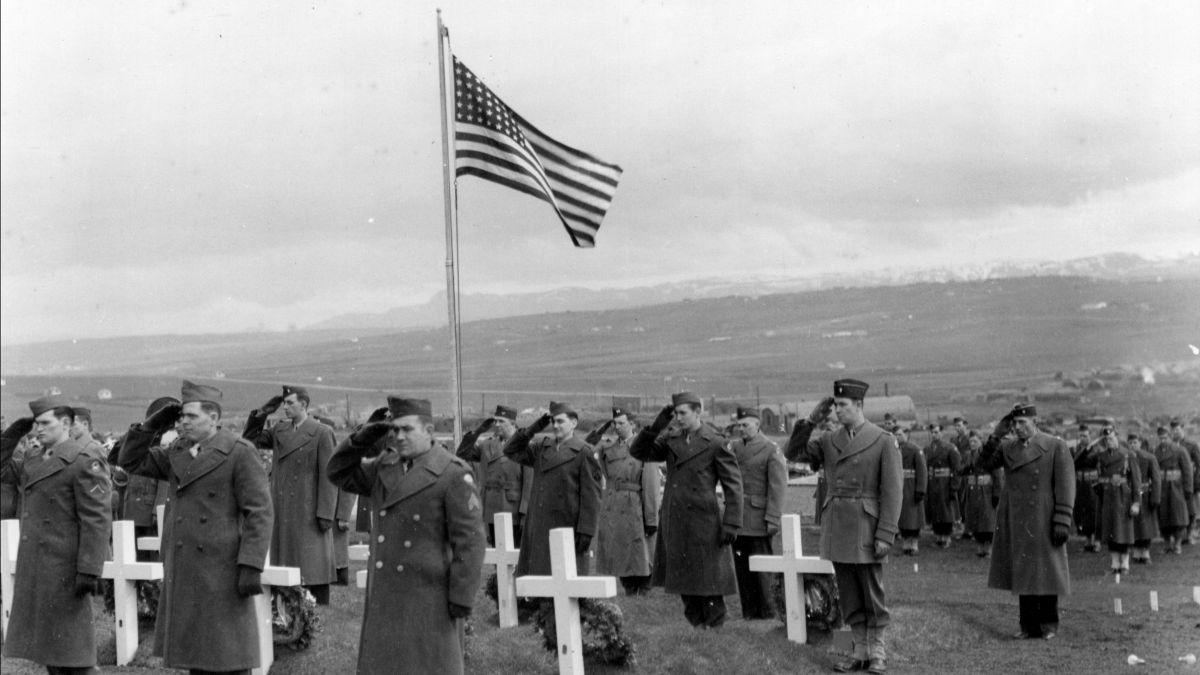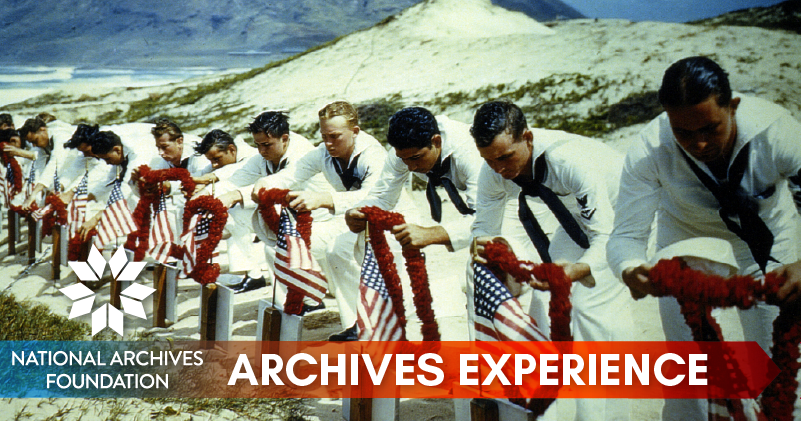Archives Experience Newsletter - May 24, 2022
The Ultimate Sacrifice
This weekend is Memorial Day, a time to honor the fallen soldiers that made the ultimate sacrifice for the security and freedom of our nation. For many of us, that means visiting the gravesite of a veteran we love and placing a flag, wreath, or other memento to mark the day. These sites aren’t just final resting places, they also provide a space to gather, share memories, or sit in quiet contemplation. Physical markers anchor us to those we’ve lost, and especially on Memorial Day, being able to share this experience with others who have lost loved ones in the line of duty builds community and eases grief.
Some of us live close to the final resting places of our loved ones, who are buried in town cemeteries or near their place of worship. Others may make a farther journey, like to Arlington National Cemetery. But for the families of about 124,000 service members, the journey is much farther: overseas. Though these soldiers rest far from home, their service will be honored by the United States Government for eternity. The American Battlefield Monuments Commission has cared for fallen soldiers on foreign land since 1923, and they provide a vital service for families who cannot bring their loved ones home.
In this week’s newsletter, we’re not only honoring our fallen military members, but also the organization that cares for them and maintains their memories abroad.

Patrick Madden
Executive Director
National Archives Foundation
Honored Abroad
According to “America’s World War II Burial Program,” a publication of the National Cemetery Administration, a division of the U.S. Department of Veterans Affairs, during World War II, the fallen were buried as expeditiously as possible for several reasons, not the least of which was to assure the living of the respect with which the lost would be honored. There was a policy in place that forbade transport of the remains of the fallen as long as hostilities were still in action, but their families were notified of their passing and told that further decisions would be made about final interment later.
All families of U.S. military troops killed in combat had three options for interring their remains: they could leave them buried in a permanent overseas cemetery that would be maintained in perpetuity, they could have them returned home at government expense to be buried in a national or private cemetery, or they could send them to a foreign country if it was their homeland or the homeland of their family for burial there.
Most families chose to have their loved ones returned to the United States for burial, but many did not. There was a substantial delay in getting remains returned, ranging from two years to five or more, depending on when their loved one died.
After World War I, the United States government recognized the need to establish an agency within the executive branch that would be responsible for building and maintaining cemeteries and memorials overseas for fallen members of the U.S. armed forces. The American Battle Monuments Commission (ABMC), established in 1923, operates and maintains twenty-six American military cemeteries and thirty-two federal memorials, markers, and monuments, seventeen in foreign countries, one in Gibraltar, one in the Northern Mariana Islands, and four monuments in the United States. Each cemetery has a chapel, a flag pole, and a museum exhibit.
The Cartographic and Architectural Branch of the National Archives is the repository of plans for twenty-six World War I and World War II military cemeteries. View some of them below:
A Worthy Resting Place: American Military Cemeteries Overseas
Forever by the Sea
Quite possibly the best-known of all the overseas American military cemeteries, Normandy American Cemetery and Memorial holds 9,386 graves of American military dead and a memorial, the Walls of the Missing, that is inscribed with the names of 1,557 who are unaccounted for. The names of those who have since been identified are marked with rosettes. The cemetery is in Colleville-sur-Mer, France, within sight of Omaha Beach and on the site of the first temporary American cemetery built on European soil during World War II. Most of those interred there died in the D-Day landings.
In honor of the 75th Anniversary of D-Day, the Archivist of the United States, who is a Navy veteran, along with members of the National Archives Board visited the Normandy American Cemetery and Memorial and participated in a wreath laying ceremony to honor those fallen soldiers. While the seaside site was rainy and windswept that day, the skies parted and a rainbow was seen in the distance as the National Anthem played at the end of the ceremony.
Normandy is the ABMC’s most-visited cemetery and has been frequently visited by Presidents throughout the past nearly eighty years.
Divided Resting Places
American military cemeteries are located all over the world, not just in Europe. The cemetery in Busan was built by the United Nations Command for the interment of some 2,300 war dead, of whom thirty-six are Americans. The ABMC built a Korean War Monument there to honor the American troops who gave their lives in defense of the freedom of the Republic of Korea between 1950 and 1953.
Of course, these gravesites are located in present-day South Korea. Troop burials in North Korea are much less clear; there are no official estimates of how many fallen soldiers call this their final resting place, but estimates are somewhere over 180.

Generational Caretaking

Netherlands American Cemetery and Memorial
National Archives Identifier: 6003569

Netherlands, Margraten, Holland
National Archives Identifier: 6003660
The Netherlands American Cemetery near Margraten, the Netherlands, is distinctive for several reasons, one being that it is the only such cemetery in the Netherlands. It is singularly beautiful, with a tall, white memorial tower that is visible long before one reaches the cemetery proper.
Another distinction is that since 1945, the local Dutch people have made sure that the soldiers buried in the cemetery are not forgotten. They have adopted the soldiers’ graves and decorated them with flowers, researched the soldiers’ lives and collected their photographs, and participated in the bi-annual Dutch Memorial Day weekend event at the cemetery. Many families have passed the responsibility of looking after a particular soldier’s grave down to the next generation to show their gratitude for the sacrifice that helped liberate the Netherlands from Germany in World War II.
The Red Poppy

FDR receives a poppy
National Archives Identifier: 17343447
The red poppy, the symbol of fallen war dead, is worn in Europe on and around Remembrance Day or Armistice Day, November 11, the day that marks the end of World War I. In the United States, the poppy is more typically worn on Memorial Day, the last Monday in May.

Italian service workers wearing poppies
National Archives Identifier: 138926364
It all began with a poem. Lieutenant Colonel John McCrae, a Canadian surgeon, served with an Allied artillery unit at the Second Battle of Ypres in France in 1915. This was the first battle at which the Germans used chlorine gas on enemy forces. In all, 87,000 Allied soldiers and 37,000 German soldiers were killed, wounded, or went missing during the battle. The battlefield itself was the scene of almost unbelievable carnage. But at the funeral service of his friend Lieutenant Alexis Helmer, McCrae saw splashes of scarlet on the battlefield where red poppies, Papaver rhoeas, were blooming.
Moved by the sight, McCrae wrote “In Flanders Fields,” fifteen short lines that have since become one of the most famous of all war poems. Since its publication, the red poppy has been adopted by veterans’ organizations on both sides of the Atlantic as a symbol of remembrance.
In the United States, the Veterans of Foreign Wars started the Buddy Poppy program in 1922, selling little red flowers made of silk-like material to raise funds to support needy and disabled veterans, other members of the Armed Forces, and their dependents.
(7 minutes 6 seconds)
National Archives Identifier: 92895







































